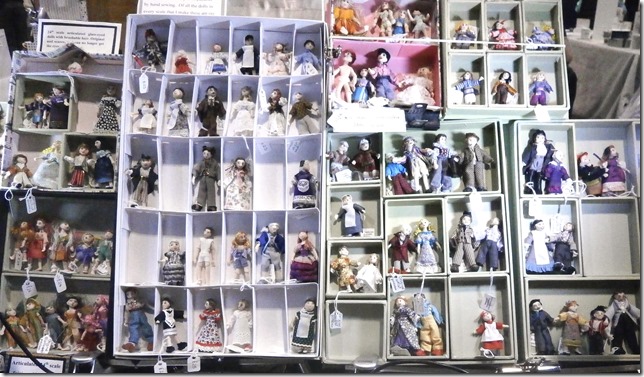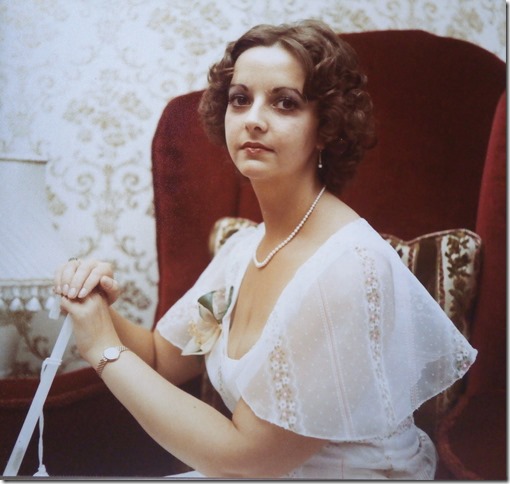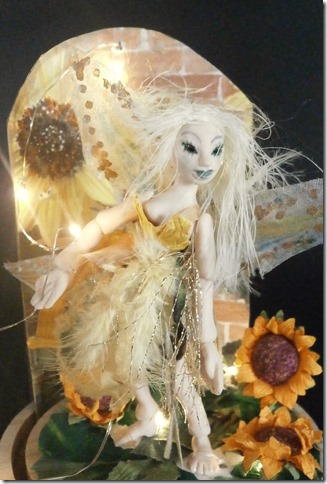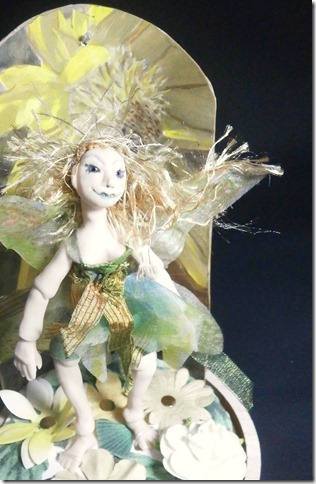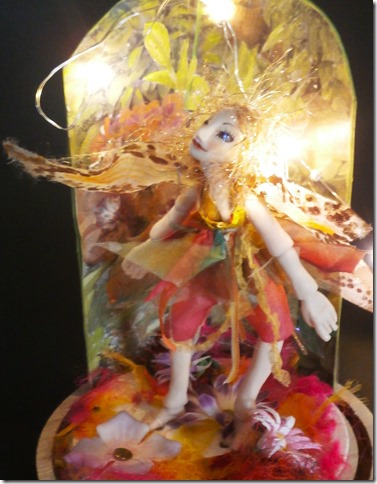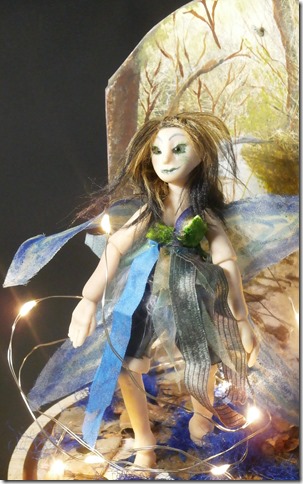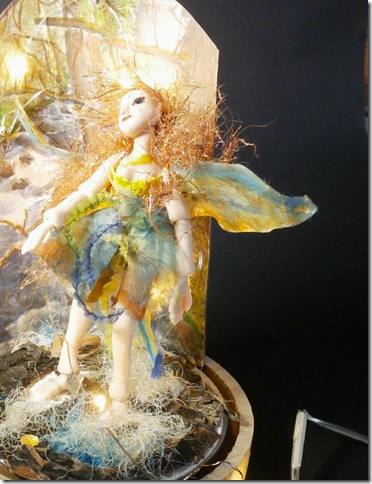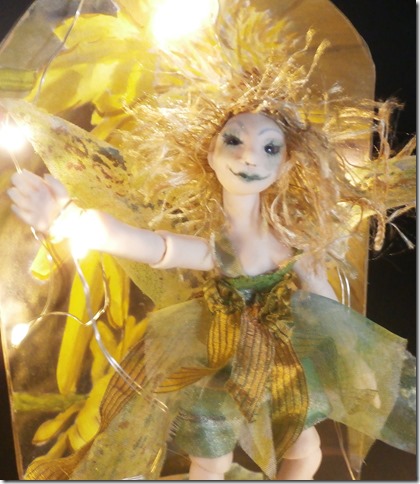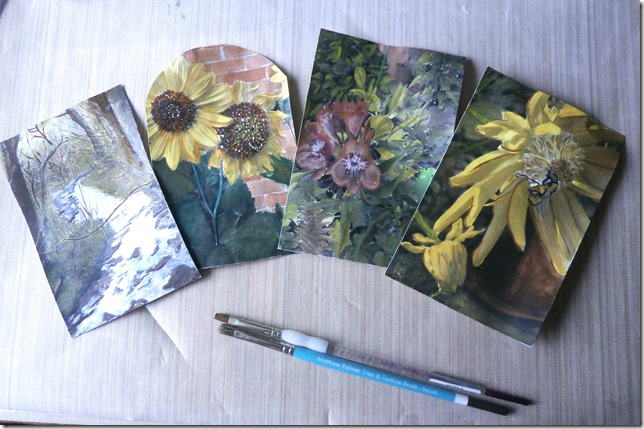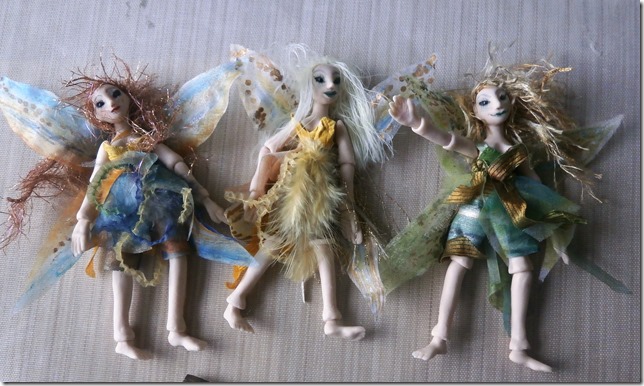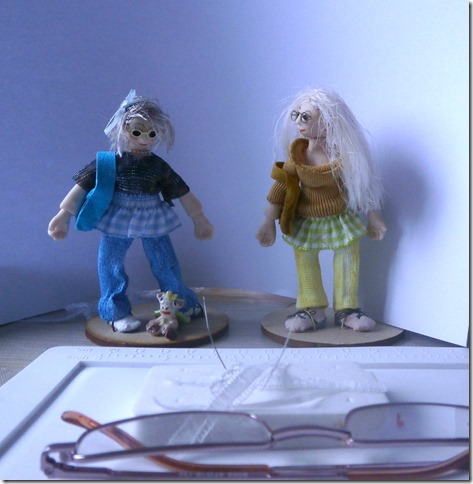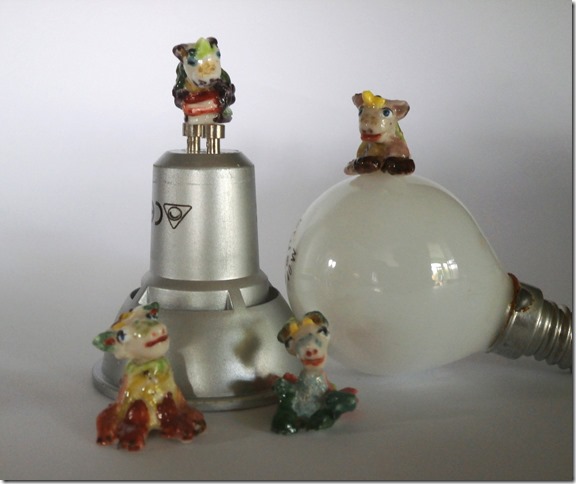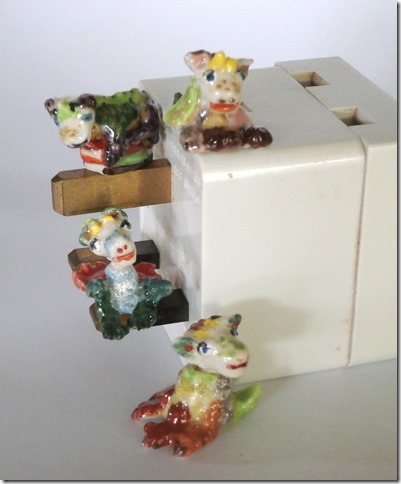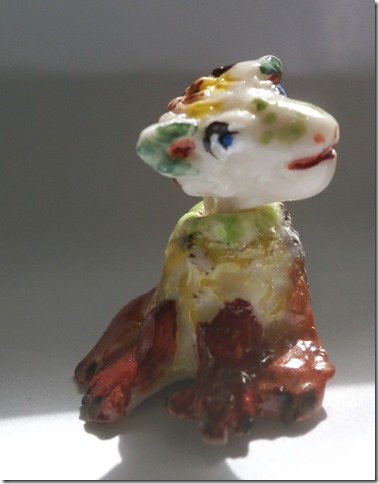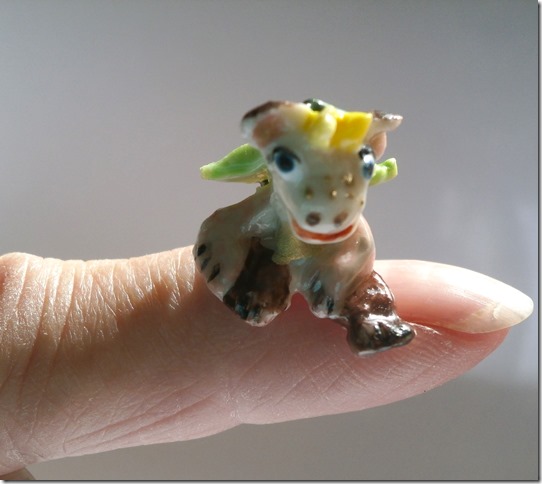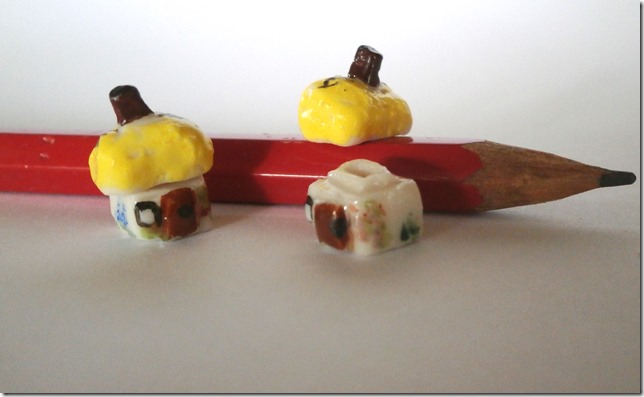You may not have heard as much as you would wish from me since the Min. There are several reasons: one, I was knackered, two, I was tired and three, I was doing a stand redesign.
I do have some photos of wonderful things from the show, which is coming back from Covid with a will. I want to get the redesign out of the way first because it involves the dining room being a no go area whilst I get creative about space.
Lack of space is a feature of the expanding show, which is always challenging, to use the modern term. I now take nearly a thousand miniature items to the show but I have only three hours to construct the display and place the objects. Here is the display from the Spring on one side of the table.
These dolls are incredibly precariously placed in their boxes. The ones on the right, stacked up, are resting on a metal picture stand, inherited from my father. The base of the stand is collapsible and needs a metal ruler held in it with a bulldog clip to prevent it collapsing and all the boxes above are stuck to each other and the metal struts with Blu tack. On the extreme left is the start of the twelfth scale glass eyed dolls, in boxes with a similar arrangement and between them the segmented white box (which was an evening dress shirt box) wedged into a pair of curly shelf brackets, upside down, as you do.
This time the new fairies in their domes were on the corner on some stacked MDF boxes with an offcut of fabric artistically arranged. Below them the dragons on a selection of acrylic blocks, all individually put out.
I looked at the stand next to me, which had selves constructed at the show from slotted plywood shapes. You would think as the OH has his own workshop and every tool you can imagine, that emulating such a feat would be a snip.
However, since the floor collapsed into the wet, the shed is now a no go area. Therefore I had a trip round various local DIY shops and spent three days faffing about with polystyrene coving and all the ancient cardboard from behind the shelves in the garage.
So now, having wasted three days (although it was quite interesting) I have reverted to making huge nesting boxes by which I can elevate the metal picture stands and have a row of precarious boxes beneath them too.
It’s going to be wonderful maybe.
Meanwhile to the real information, about which I was going to inform you, informatively (because this blog is categorised as ‘site information’) if I hadn’t distracted myself. JaneLaverick.com is now archived by the British Library.
The S&H applied for this a few months ago and heard the blog had been accepted just a couple of days before the show.
You’ll be aware that there are several types of blogs and endless demonstrations on the Internet and so is the British Library. I think it is a very good thing that new ways of spreading information and keeping in touch are being preserved for posterity.
I think of the wonderful window on the seventeenth century that is the dairy of Samuel Pepys. It is so honest, not least because he was writing it in code. To read it is to be back in time, sharing his concerns and knowing the man.
I do hope this blog has captured in the last fifteen years what it is to be a late middle aged woman in the twenty first century. I remember in the nineteen sixties a television programme called Tomorrow’s World. The presenters were inclined to posit the theory that the rise of living standards, the use of robotic helpers and the increase of global wealth would leave us all with vast amounts of retirement time to fill, somehow. I don’t remember anyone suggesting this would be done by people sliding their fingers round screens. I don’t recall predictions of the rise of families famous for being famous, of teenagers being stars in their own bedrooms just for demonstrating how to put lipstick on, or any of the other things to be found on You Tube and similar platforms.
But they did suggest hobbies would be important. They are.
As you know, this blog was started to publicise artisans in the Dolls’ House hobby, which enjoyed a resurgence in the 1970s, flourished mightily in the eighties and nineties and has subsided since. In the early Noughties we saw the emergence of crafting TV, currently a million dollar business, which dolls’ house miniatures never was. I predict the slow decline of this, prompted by the vast number of people making videos from their own homes, which do not require the expense of a TV studio to produce.
I think the Dolls’ House hobby will continue, it has proved resilient, along with railway modelling and a variety of traditional handicrafts such as knitting and quilting.
This blog, however, as you know, settled down and spread in maturity. A lot of it is me, larking around, writing. Some of the writing turned quite serious in nature because of the prevalence of the newly global phenomenon of dementia in an ageing population. I also catalogued ill health on my own part, and, therefore, inadvertently, the National Health Service in the UK.
The late Queen snuck in, quite a bit of gardening and the occasional verse. This column is mainly writing, I hope largely polite.
What it is not is an album of family photographs. This is because of very slight journalistic training on hobby magazines; images are tricky and not to be used without permission. I rarely use names, either, for the same reason. If I report artists, I get their say so, or write verbatim what has been agreed.
One of the things you’ve never seen is a photograph of me. There are not many of them. Recent photos are marred by scars, ill health and age. But, just to satisfy the curiosity of posterity, here is one of me on my wedding day in 1976. I was 25.
My dear mother announced that she was going to wear something deliberately dowdy ‘in order not to outshine the bride.’ Which may give you a clue as to the sparsity of subsequent photos.
So here we are, reachable by posterity through the British Library, because, interestingly, if you have ever clicked on ‘leave a comment’ below and left one, and I’ve published it, you are part of the march of history too.
And now, just like the very famous literary figure, Samuel Pepys, I shall go and have some lunch.
~~~~~~~~~~~~~~~~~~

